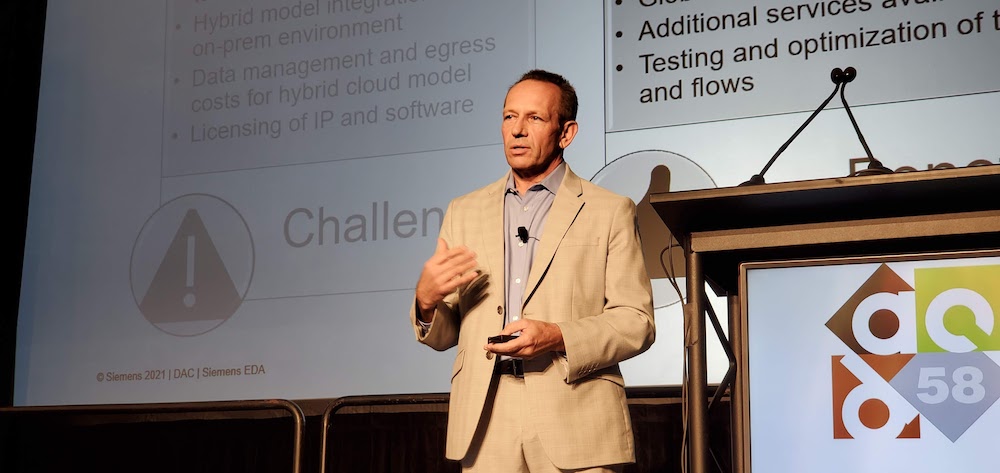My third event at DAC on Monday was all about using EDA tools in the Cloud, and so I listened to Craig Johnson, VP EDA Cloud Solutions, Siemens EDA. Early in the day I heard from Joe Sawicki, Siemens EDA, on the topic of Digitalization.

Why even use the Cloud for EDA? That’s a fair question to ask, and Craig had several high-level answers:
- Increased throughput
- Higher capacity and availability
- VMs tailored to specific workloads for maximum compute efficiency
- Enables multi-party collaboration
- Provides a global scale and consistency
- More services are available
- Better testing and optimization of tools and flows
Siemens EDA support the major three cloud vendors: AWS, Azure, Google. Mr. Johnson shared that engineering teams come up to speed with cloud-based tool flows through a process of: starting out with deployment planning resources, reading technical papers, watching presentations, finding application notes, making their own checklists, creating deployment guides, receiving AE assistance, using templates, deploying EDA tools, and re-using cloud-specific scripts.
Several specific EDA tools were mentioned from Siemens EDA, like:
- Calibre nmDRC – design rule checking
- Analog Fast SPICE – circuit simulation
- Veloce – hardware emulation
- Questa – functional simulation

Design groups can use cloud-based tools in a self-managed environment, or have Siemens manage the environment for them. Craig showed that there are four ways to use could-based EDA tools: a managed cloud from Siemens, cloud connected as an extension to on premise cloud, cloud native for full or partial tool flows, and finally, Velocity cloud which is using the Veloce emulator in the cloud.

With the managed cloud offering from Siemens, they will configure all of your software tools in the cloud, provide CAD support, and share reference designs to get you started most quickly. This approach keeps your engineering headcount lower, by using the cloud as a service. Data traceability is including, so you’ll always know who uses a particular tool and what designs they have run through each tool. VPN technology gives your engineers a remote desktop to run each of the EDA tools in the managed cloud.
For a cloud connected tool flow, you start with on premise compute, then add on cloud services as needed, depending on the workloads. Peak loads can be done in the connected cloud.
The Cloud native flow has all of your EDA tools in the cloud, along with all design data, tool results, log files, PDK files, semiconductor IP, tests, etc. One application is for IC companies to showcase their new chips by providing a virtual evaluation board, in the cloud, instead of manufacturing a board and then shipping it out for evaluations. Engineers could evaluate the new chip as mounted on a virtual evaluation board, apply stimulus, make measurements, even run their own firmware or software.
Buying a hardware emulator is expensive, so offering an emulator in the cloud makes a lot of economic sense if your team just needs to run some software on a new SoC before silicon is ready. Emulation as a service is an emerging market and can be quite attractive for first-time emulation users.
In summary, doing EDA in the cloud makes sense because of the speed benefits, and with the cloud you can do simulations, verifications, virtual boards and even emulation. Most of these tasks are not as feasible with on premise infrastructure.
Related Blogs
- DAC 2021 – Joe Sawicki explains Digitalization
- Siemens EDA will be returning to DAC this year as a Platinum Sponsor.
- Machine Learning Applied to IP Validation, Running on AWS Graviton2
- Verifications Horizons 2021, Now More Siemens
- Debugging Embedded Software on Veloce






Comments
There are no comments yet.
You must register or log in to view/post comments.